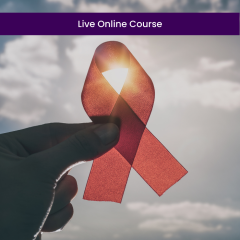Paternal Risk Factors and Elementary School Bullying (1 CE)
Number of Credits: 1
This course is for: Clinical Psychologists, Counselors, Marriage & Family Therapists, and School Psychologists
Course By: Ken Springer, PhD
Content By: de Vries, E. E., Verlinden, M., Rijlaarsdam, J., Jaddoe, V. W. V., Verhulst, F. C., Arseneault, L., & Tiemeier, H. (2018). Like father, like child: Early life family adversity and children's bullying behaviors in elementary school. Journal of Abnormal Child Psychology, 46, 1481-1496.
https://doi.org/10.1007/s10802-017-0380-8
Course Description: Children exposed to parental hostility, family distress, and harsh disciplinary practices are more likely to engage in bullying behavior. However, studies linking these elements of family adversity to bullying are grounded primarily in mothers' perceptions and behaviors. The present study examined associations between family adversity and children's bullying through analyses in which maternal and paternal data were treated separately. Family adversity was measured through parent surveys administered during pregnancy and when children were 3 years old. Children's bullying behavior was subsequently documented via peer nomination in grades 1 and 2. The researchers found that children's bullying was associated with father-reported prenatal family distress, as well as fathers' hostility and harsh disciplinary practices when children were preschool age. Among mothers, only mother-reported family distress at preschool age was associated with children's bullying. These and other findings suggest that anti-bullying interventions should occur early and incorporate parents, particularly fathers.
Learning Objectives:
- Understand the rationale for the study as well as the approaches used to measure family adversity and bullying
- Describe the main findings of the study, emphasizing differences between maternal and paternal predictors of children's bullying
- Integrate the strengths and limitations of the study, and summarize the clinical implications for interventions designed to reduce bullying among elementary school children
Course Outline:
- Read and understand Like father, like child: Early life family adversity and children's bullying behaviors in elementary school
- Review the Course Description and Learning Objectives
- Understand how social learning theory provides a rationale for linking children's bullying to early family environment
- Describe how family adversity and children's bullying behavior were measured over time
- Distinguish between the maternal and paternal risk factors that were found to be associated with children's bullying
- Integrate the study's key findings, strengths, limitations, and clinical implications
- Work through the post-test questions, using the article as the sole basis for your answers
- Revisit the article for any missed questions and/or to better understand how maternal and paternal risk factors predispose children to bullying
Approvals:
| Board Approvals | American Psychological Association (APA), NBCC, Florida Board - Social Work, MFT, Counseling, and Psychology, NYSED - Social Work, MFT and Counseling Only, American Academy of Health Care Providers in the Addictive Disorders |
|---|---|
| CE Format | Online, Text-Based |







